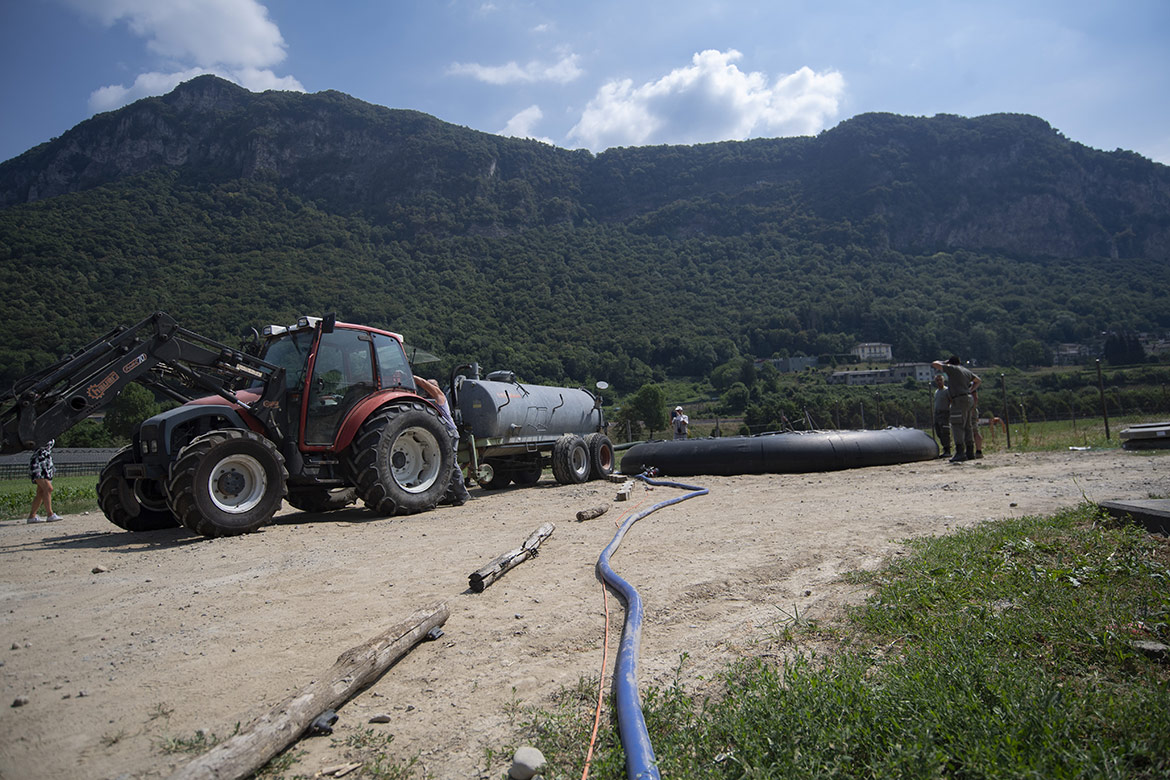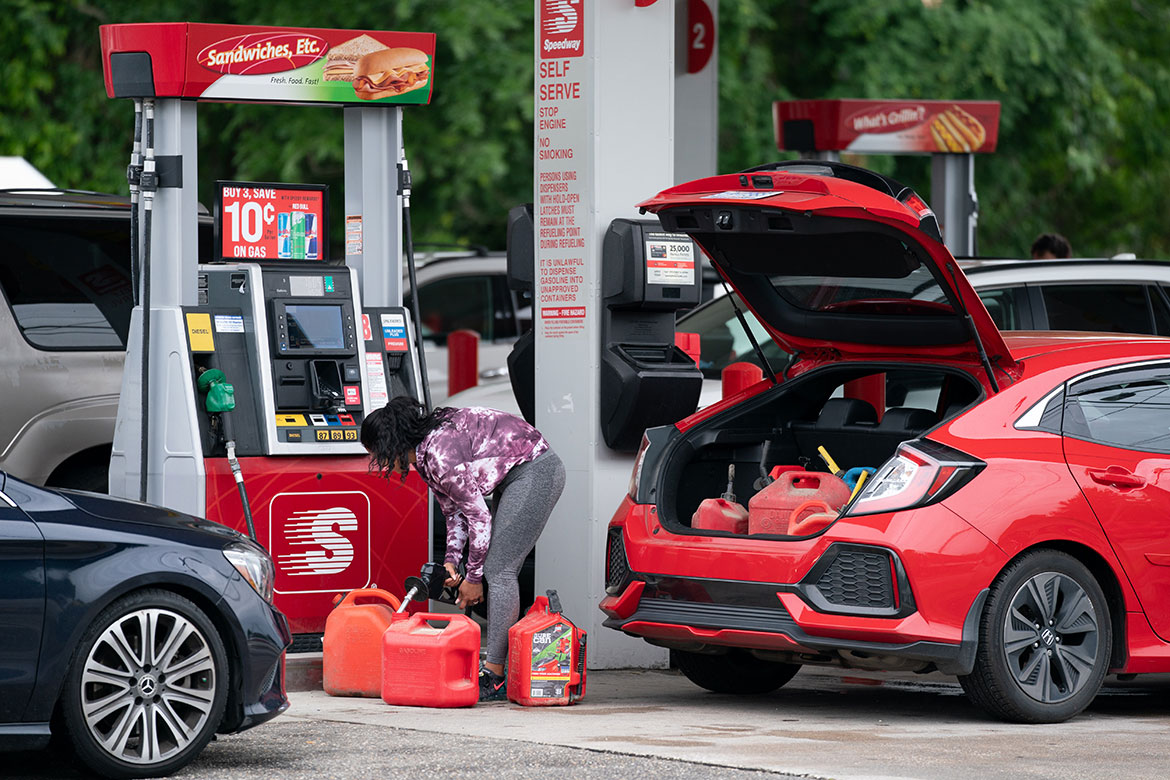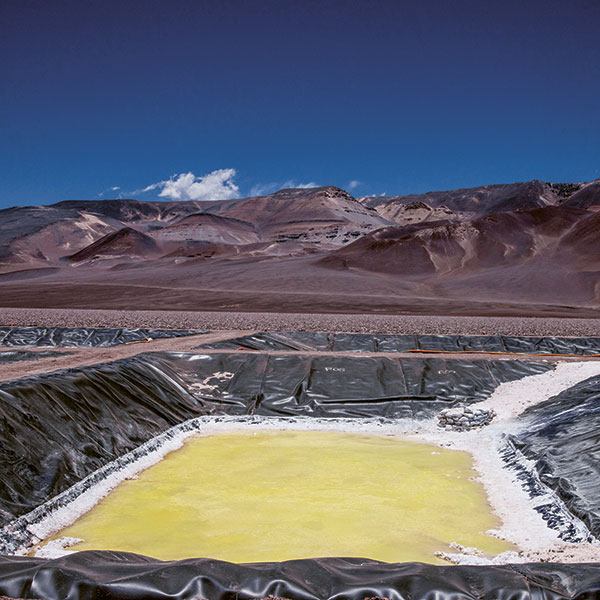Feature: Water bargaining
Preparing for the droughts of the future
In Switzerland, both the Central Plateau and the Alps will need significantly more irrigation in the near future. We take a look at how the cantons of Aargau and Basel-Landschaft and municipalities in the canton of Graubünden are preparing for drought and water shortages.

In Mendrisiotto in the canton of Ticino in July 2022, a water basin and a tanker here stood ready to irrigate the fields and vines. | Photo: Keystone/Pablo Gianinazzi
If there is one resource of which Switzerland can boast almost inexhaustible quantities, it’s water. With its glaciers, melting snow, huge groundwater streams and lakes – and of course the Alps, which reliably help rainclouds to form – this country is a veritable water factory. But climate change is putting a brake on its production capacity. In the summer months, Switzerland now has to reckon with dryness and even drought. This means that the future could well bring conflict over water use.
Aargau at the forefront
The Swiss federal government, the cantons and the local authorities are now cooperating with researchers in a race to forestall impending disputes over a resource that once seemed infinite, and to come up with countermeasures to solve future shortages. It’s often former researchers who are at the helm of the authorities in charge of these discussions. And besides their expertise, they also bring objectivity to discussions that can at times turn emotional.
Until two decades ago, it was still unimaginable that water could ever become scarce in Switzerland. “Neither scientists nor the authorities had that possibility on their radar”, says Massimiliano Zappa, a hydrologist at the Swiss Federal Institute for Forest, Snow and Landscape Research (WSL). But then came the exceptionally hot summer of 2003. “That was an epiphany. It made people realise that water scarcity could become a natural hazard in our country too”.
Today, climate modelling allows researchers and authorities alike to know pretty exactly what’s ahead for us. The gap between supply and demand will be widest on the Central Plateau – that’s where the most water is needed. Last year, the research centre Agroscope presented a study entitled ‘Climate-Resilient Arable Farming in 2035’. The figures are daunting. If no measures are taken, the models used predict a decrease in runoff – that’s the water transported by our rivers – of up to 20 percent in the Central Plateau, while in Central Switzerland and the Alps it could be as high as 40 percent.
At the same time, there’s going to be a massive increase in the need for irrigation. Depending on the climate scenario and the region in question, that need could increase by between 50 and 300 percent in the next few decades for crops like fruit, berries and vegetables. This brings with it a major potential for conflict with others who need water. “Farmers, industry and private households could all be in direct competition for water resources. That’s why many cantons have developed a water strategy, or are working on one. This enables them to define rules for water allocation in the event that it becomes scarce”, says Petra Schmocker-Fackel, a scientist who used to work in mountain hydrology, but is now attached to the Hydrology Division of the Federal Office for the Environment in Bern.
The canton of Aargau is a pioneer in matters of water management, and it’s currently developing its own cantonal strategy, says Norbert Kräuchi, an environmental scientist who’s the head of Aargau’s Landscape and Waters Division and who specialises in the impact of climate change on forest ecosystems. His project was triggered by the annual water shortage in the Bünz, a medium-sized river that flows through intensively farmed arable land in the southern part of the canton and is used for agricultural irrigation.
But demand is exceeding the river’s capacity. “Every year, in May and June, I had to turn off the water to the farmers in the Bünztal so that the Bünz didn’t fall below the legal minimum residual flow rate”, says Kräuchi. The interests of aquatic ecology here clashed with those of agriculture.
Cultivating early-ripening crops
To tackle this problem, the canton of Aargau, in collaboration with the federal government, launched a project on the topic of agriculture and irrigation. In the Bünztal, one focus area was the crops that are grown there. “We looked at what the water was being used for. It turned out that 90 percent of the area was regarded as not worthy of irrigation”, says Kräuchi, which meant that the costs of irrigation were higher than the resultant yield increases. This is the case, for example, with roughage such as grass. So efforts ought rather to be focussed on crops that are regarded as worthy of irrigation, such as vegetables, fruit and berries, and that have a high added value. “But water from the River Bünz is so cheap when compared to drinking water that farmers haven’t had to consider such issues until now”, says Kräuchi.
“This is why, when withdrawal licences from the Bünz are suspended today, farmers often switch to the public water supply. But this is also reaching its limits in many places”, says Kräuchi. As a result, 19 local authorities have now launched a project entitled ‘Water 2035’ that aims to connect their municipal supplies by means of a large ring pipeline.
“It’s due to be finished by 2035 and will secure the transregional water supply”, says Kräuchi. “Adapting agriculture to climate change will presumably take longer”. But there’s been a striking increase in the number of people who in recent years have realised that this process needs to be tackled actively.
There’s another approach under discussion, one that would mean reducing the need for irrigation – namely that we should grow crops that can manage without it, or with very little. Such as early-ripening varieties like those that are cultivated around the Mediterranean and are already harvested before the major summer drought. But there is still little widespread awareness of these options, as is obvious from how water requirements in agriculture have been developing across Switzerland. According to ‘Climate-resilient arable farming in 2035’, the proportion of agricultural land requiring irrigation in this country is expected to increase from 50 percent today to roughly 70 percent by 2035.
The decrease in the volume of water in the rivers is primarily due to the reduced amount of snow. “This is one of the main problems in a warmer climate”, says Klaus Lanz. He’s the owner of ‘international water affairs’, an independent research and advisory institute for water, and he also advises Swiss cantons and the federal government on water conflict. “Ever-decreasing levels of precipitation are being stored as snow or ice in the winter. And this lack is reflected in the water available in the summer and autumn. So we have to find other ways of saving the winter water for the summer”.
Large-scale, multi-purpose storage
The cantons currently see great potential in local water reservoirs. These are small, artificial basins with a surface area of several thousand square metres and a water capacity of roughly ten thousand cubic metres. The authorities of Basel-Landschaft have been studying these reservoirs in detail because the canton is particularly affected by the decreasing runoff volumes of the Swiss rivers. “The water seeps away quickly in the porous karst of the landscape. In the future, we’re going to have very little surface water in the dry summer months”, says Adrian Auckenthaler, a water expert who’s head of the water division at the Office for Environmental Protection and Energy of Basel-Landschaft.
These reservoirs have to be excavated to a depth of two or three metres and are then covered with a film. They are filled when there is an abundance of water – such as in winter or spring. “The idea is to feed the reservoirs from rivers, groundwater or rainwater”, says Auckenthaler.
Thus far, only a few such reservoirs are currently in operation in the canton, and are being primarily used for agricultural irrigation. “The farmers have to excavate them at their own expense, and it’s mostly the fruit growers who do so, because they’re dependent on water. The pressure isn’t generally high enough on farmers of other crops”, he says.
In the future, regional reservoirs like these could also have other functions, such as supplying drinking water or ensuring the flow rate of streams. But such multi-purpose water storage facilities would need much greater capacity. They’re already being considered in the Alps, although the costs and potential benefits have to be weighed up very carefully, because it’s both complex and expensive to construct large reservoirs in the mountains. The proof of this can be seen in the Nagens Reservoir in Flims in the canton of Graubünden, which until now has only been used for making artificial snow on the ski slopes in the winter.
Giving water sovereignty to the cantons
Marco Illien is the CEO of Flims Electric AG, which was involved in this project along with the neighbouring municipalities. “We’ve been examining whether the reservoir could be used on a multifunctional basis”, he says, “maybe for returning water to the Flem during dry summers, or for storing solar power on a daily basis”. But this would bring other requirements with it, including an increase in the capacity of the reservoir. “Such a construction project would have cost millions, and wouldn’t have been either economically viable or financially sustainable for us”.
The cantons are using their new strategies in an attempt to neutralise potential future conflicts over water. “Regional supply planning means we control groundwater extraction for drinking water consumption and for industrial water. Legislation stipulates the quantities of water that have to remain in the rivers”, says Auckenthaler. So the idea is to use regulations to help harmonise the water use of the individual protagonists. But this is easier said than done, because water sovereignty in many cantons still lies with the municipalities.
And this approach will also be impractical if there is a severe drought that affects large parts of the country. “We have to discuss whether the canton should temporarily assume water sovereignty in such cases. It’s the same with the risk of forest fires. It’s the canton that decides whether or not to ban making fires outside”, says Norbert Kräuchi.
The current ‘Catalogue of threats’ issued by the Federal Office for Civil Protection (FOCP) also reveals that drought is increasingly being dealt with at a national level. This document is some 80 pages long and discusses all potential threats to Switzerland, from tsunamis in lakes to disinformation campaigns. Drought has now been added to it.
A database for water reserves
Drought warnings can already be disseminated by the federal warning system, ‘Alertswiss’, which can use its mobile app and its website to issue warnings in the event of an extreme drought. “The federal government and the cantons are currently discussing how to respond in concrete terms to such a warning”, says Zappa from the WSL.
But what we still need is data. “We are currently working on a database for predicting water supplies and documenting the impact of drought”, says Zappa. An experimental version of it is already online on the platform ‘drought.ch’. What’s still lacking is a means for predicting or even just measuring the current water utilisation level on a national scale. In future, this database ought to show how much water is currently needed, by whom, where, and what conflicts could arise as a result. That, at least, is the vision. “It’s our aim to be able to see one month in advance who is going to need how much water”, says Zappa. “Then we’ll be able to tackle any conflicts of use before they arise”.




